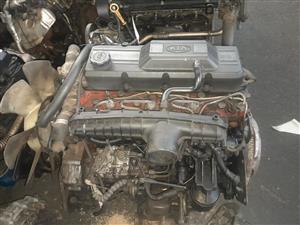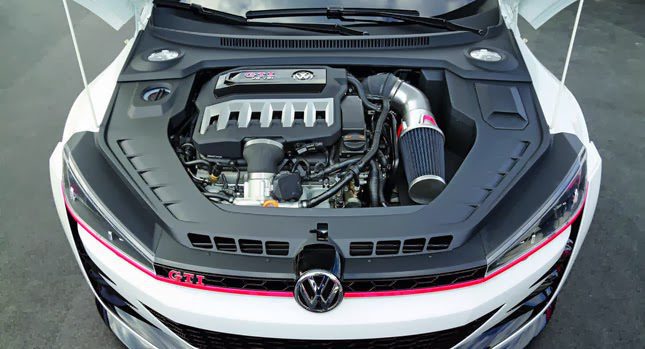Improve Your Experience with a High-Quality Opel Corsa Engine
Wiki Article
Discovering the Inner Operation of a Compact Lorry's Engine System
As drivers, we commonly take for granted the detailed processes that take place within the confines of our car's engine system. In this expedition of a portable car's engine system, we will unravel the inner workings of this mechanical harmony, dropping light on the secrets that drive us ahead on our day-to-day trips.Burning Refine Summary
The burning procedure in a compact vehicle's engine system is a critical mechanism that successfully converts gas into power to power the lorry. This procedure takes place within the burning chamber of the engine, where fuel and air mix, ignite, and create controlled surges. The combustion process is composed of 4 major stages: consumption, exhaust, compression, and power.During the consumption phase, the piston moves downward, pulling in a blend of air and gas into the burning chamber. The following stage, compression, includes the piston relocating upwards, pressing the air-fuel mix to raise its potency. Consequently, in the power stage, the ignition system sparks the pressed blend, causing a quick growth of gases that requires the piston back down. This descending motion generates the power needed to drive the automobile. Finally, in the exhaust phase, the scorched gases are gotten rid of from the combustion chamber through the exhaust valve, preparing the chamber for the following cycle. This cyclic combustion procedure is essential to the operation of a small automobile's engine system, guaranteeing reliable power conversion for propulsion.
Piston and Cyndrical Tube Communication

The piston's accurate fit within the cyndrical tube is necessary for keeping optimal compression and avoiding power loss during burning. Tight clearances between the piston and cyndrical tube walls make certain effective securing, enabling the piston to move smoothly without enabling gases to leak past. Appropriate lubrication is also essential to lower rubbing and put on in between these parts, boosting long life and performance.
Additionally, the design and products used in making the piston and cyndrical tube effect engine efficiency and toughness. Modern engines commonly employ light-weight yet resilient materials like aluminum alloys for pistons and cylinder linings to minimize inertia and improve thermal effectiveness. Generally, the unified interaction between the piston and cyndrical tube is fundamental to the engine's performance and overall efficiency.
Fuel Injection System Performance
Fuel injection systems in compact car engines play an essential role in specifically supplying look at this website fuel to the burning chamber for efficient and regulated ignition. The fuel injection system operates by infusing fuel right into the combustion chamber at the ideal moment throughout the engine's operation (opel corsa engine). This specific timing makes certain that the gas blends evenly with the air for proper burning, resulting in improved gas efficiency and reduced exhaustsThere are primarily two kinds of gas injection systems made use of in portable lorry engines: port gas shot (PFI) and direct fuel shot (DFI) PFI systems infuse fuel right into the consumption port before the intake shutoff, while DFI systems inject gas straight right into the combustion chamber. Both systems have their benefits, with DFI supplying better fuel atomization and PFI providing a more affordable solution.
Recognizing Engine Air Conditioning Devices
Efficient operation of a portable automobile's engine depends greatly on the performance of its cooling systems. The cooling system in a compact automobile normally consists of numerous elements working with each other to regulate the engine temperature level. Understanding these engine air conditioning systems is crucial for keeping the efficiency and durability article of a portable vehicle's engine system.
Exhaust System Parts Explained
The optimum performance of a portable automobile's engine air conditioning devices depends on a complementary system understood as the exhaust system, which makes up various crucial elements for ensuring efficient discharges and engine performance. The exhaust manifold gathers exhaust gases from the engine's cylinders and courses them to the view it catalytic converter.One important component of the exhaust system is the oxygen sensing unit, which keeps an eye on the oxygen degrees in the exhaust gases to assist manage gas consumption and make certain optimal engine performance. opel corsa engine. Furthermore, the resonator may exist in some exhaust systems to minimize sound degrees. On the whole, the exhaust system plays a crucial function in maintaining engine effectiveness, decreasing hazardous discharges, and guaranteeing a quieter driving experience for small lorry owners

Final Thought
To conclude, the small car's engine system is an intricate mix of components that function together to promote the burning procedure, convert fuel into power, and expel waste gases. Understanding the inner workings of the engine system, including the piston and cylinder communication, fuel injection system, engine cooling devices, and exhaust system components, is critical for keeping ideal performance and effectiveness of the lorry.The combustion procedure in a small vehicle's engine system is a critical system that effectively converts fuel right into energy to power the automobile.Gas shot systems in portable car engines play an important duty in precisely providing fuel to the burning chamber for controlled and reliable ignition.There are largely 2 types of gas shot systems made use of in portable lorry engines: port fuel injection (PFI) and straight gas shot (DFI) Recognizing these engine cooling devices is vital for keeping the efficiency and durability of a compact car's engine system.
The optimum functioning of a portable vehicle's engine cooling mechanisms depends on a complementary system understood as the exhaust system, which consists of numerous vital elements for making sure reliable discharges and engine efficiency.
Report this wiki page